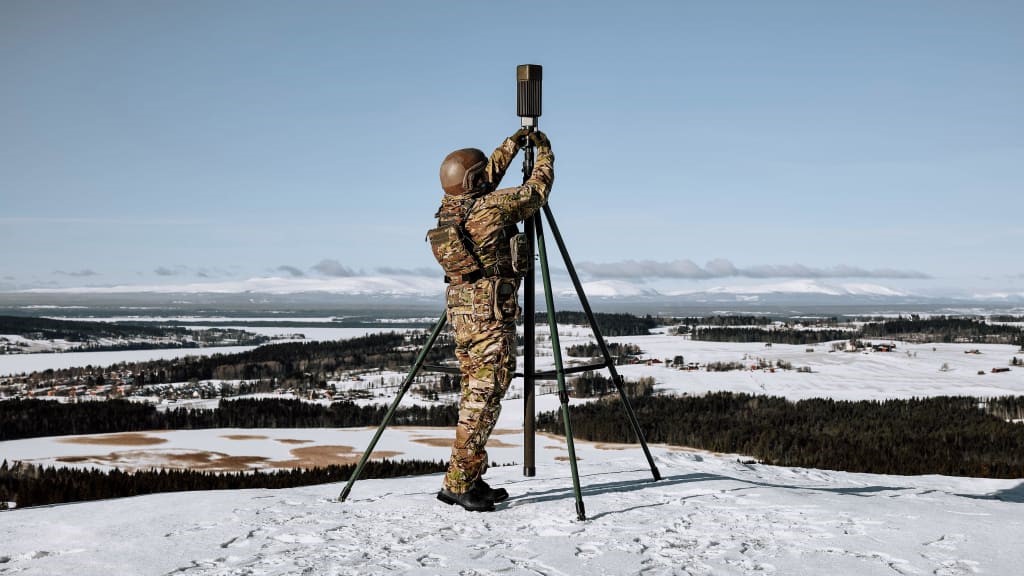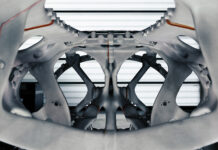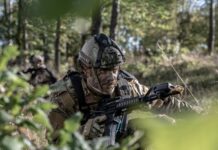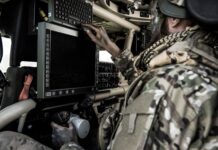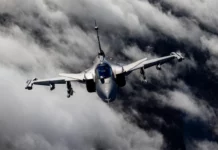At Eurosatory 2024 on 18 June Saab gave a rare briefing on its Sirius Compact range of passive electronic warfare (EW) sensors, which were launched into the market around two years ago.
Deployed individually or as a network, the Sirius Compact range of devices are signals intelligence (SIGINT) sensors that, according to Saab, “provide a true force multiplier by enhancing situational awareness through the silent detection, classification and prioritisation of radar and datalink emissions”.
Due to their low size, weight and power (SWAP) footprint (they do not have an integral power supply), Sirius Compact sensors are easily deployed in the land, sea and air domains. The L20R and L21R sensors in the Sirius Compact range, which weigh 5.2 kg and 5.8 kg and have height/diameter dimensions of 46 cm/15 cm and 48 cm /17 cm respectively, can be mounted on tripods or on vehicle-based masts; the A20R and A21R sensors, which weigh 3.3 kg and 3.9 kg and have height/diameter dimensions of 35 cm/15 cm and 37 cm /17 cm respectively, are designed as airborne sensors to offer even greater line-of-sight coverage, for carriage by tethered or free-flying rotary-wing unmanned aerial vehicles, or perhaps tethered balloons, and are lighter because they do not have a cooling module.
Sirius Compact sensors can also be mounted on small patrol boats or unmanned surface vessels to deliver a maritime situational picture of hostile electronic emissions.
While the L20R and A20R units have a frequency coverage of 2-18 GHz, the L21R and A21R units can cover 1-18 GHz.
All Sirius Compact sensors cover a full 360°, have a global navigation satellite system/inertial measurement unit capability for positioning and timing data, a recording memory of 100 GB, a power requirement of 60 W and feature an ethernet interface to be connected to a network.

Apart from their passive detection capabilities, it is the small footprint of Sirius Compact sensors that provides a key advantage. Mathew Willmot, Saab’s sales director for Sirius Compact, told journalists on 18 June, “This gives tactical electronic surveillance capability at a very, very low level, and that’s what the market has been missing.
“You know, we’ve got these large static systems sitting on the border in a 20 ft ISO container with a large antenna, and the enemy knows where it is because it sticks up, whereas this,” he said, holding one up, “you can fit inside your backpack.”
Wilmott noted that one lesson from the ongoing war in Ukraine is that everything that looks like an antenna tends to get attacked, meaning that a smaller, less obvious system is much more likely to survive.
Another key feature of the Sirius Compact sensors, according to Saab, is their high degree of accuracy in terms of measuring the direction of hostile emissions. Willmot said the company recommends that a minimum of two sensors should be deployed, with the optimum number being four (three for accurate triangulation plus one spare). These would typically be located 10s of kilometres apart, depending on the surrounding terrain.
Once a Sirius Compact network detects, locates and classifies hostile radar emissions, for example from an enemy aircraft or counter-battery radar, it can then pass on that information for subsequent action by friendly forces, who could choose to attack or avoid the detected enemy units.
The Sirius Compact range is network and platform agnostic, with Wilmott emphasising that it uses KISS, or ‘keep it simple, stupid’, operating system.
“We make much more complex, much more capable systems, but this is the tactical system and it’ll go inside your backpack,” he explained. “A soldier can put that out and get a situation picture of what’s happening on a touchscreen … you don’t need to be an electronic warfare operator to [use the system]. The purpose was to get tactical electronic warfare in the hands of the lowest operational level.”
Regarding Sirius Compact sales, Willmot noted that, of the four sensors in the range, “we are currently contracted under rather impressive quantities for the first three [the L20R, L21R and A20R]”.
